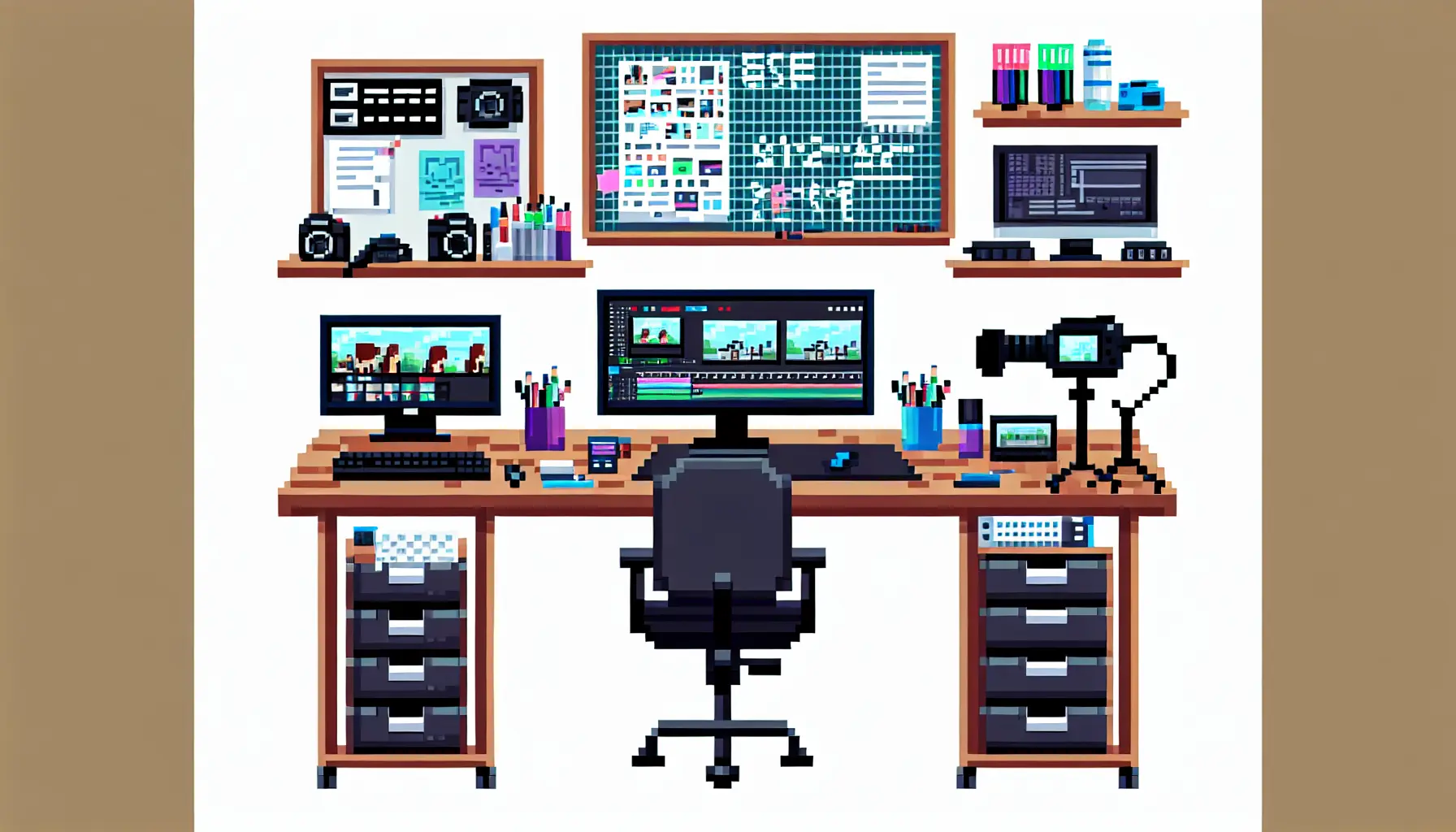Strategies for Effective Tech Content
Creating effective tech content requires a deep understanding of the subject matter and the audience. Here are the key strategies for producing compelling and impactful tech content:
Engaging Storytelling in a Technical Context
Storytelling is a powerful tool for conveying technical information in a compelling and memorable way. By weaving narratives and real-world examples into technical content, you can captivate your audience and make complex concepts easier to understand.
Balancing Depth and Accessibility
Tech content should strike a balance between providing in-depth technical insights and ensuring accessibility for a broader audience. Using clear and concise language, visual aids, and step-by-step explanations can enhance the accessibility of your content without sacrificing depth.
Multichannel Content Distribution
Effective tech content should be distributed across multiple platforms to reach a wider audience. This may include publishing articles on industry-specific websites, creating video content for platforms like YouTube, and engaging with the community on social media. An omnichannel approach can maximize the impact of your content.
These strategies empower tech content creators to produce content that informs, engages, and resonates with their audience, ultimately contributing to the success of their content initiatives

Building a Personal Brand through Tech Content
In the tech industry, establishing a strong personal brand as a content creator can significantly impact your reach and influence. Here are the key components for building a recognizable personal brand through tech content:
Developing a Unique Voice and Perspective
Providing a unique perspective on tech topics can differentiate your content from others. Whether it’s through in-depth technical analysis, thought-provoking opinion pieces, or innovative solutions to industry challenges, having a distinct voice can help you carve out a niche in the tech content landscape.
Leveraging Social Media and Online Communities
Engaging with tech communities on platforms like Twitter, LinkedIn, or specialized forums can amplify your content’s reach and foster meaningful connections with industry professionals and enthusiasts. Sharing insights, participating in discussions, and promoting your content within these communities can enhance your visibility and credibility.
Consistency and Authenticity in Brand Building
Consistency is key in building a personal brand. Delivering content on a regular schedule and maintaining authenticity in your messaging and interactions can help establish trust and reliability among your audience, contributing to a strong and enduring personal brand.
By focusing on these elements, tech content creators can cultivate an impactful personal brand that resonates with their audience and establishes them as a thought leader in the industry

Monetizing Your Tech Content
For content creators in the tech industry, there are various avenues for monetizing their work. Here are the key strategies for monetizing tech content:
Diverse Revenue Streams for Content Creators
Diversifying revenue streams can provide stability and sustainability. This includes leveraging methods such as advertising revenue, subscriptions, merchandise sales, and direct audience support through platforms like Patreon or similar membership models.
Sponsored Content and Affiliate Marketing
Collaborating with brands for sponsored content or affiliate marketing can be a lucrative avenue for monetization. By promoting products, services, or brands relevant to your content and audience, you can generate revenue through sponsored content and affiliate commissions.
Creating and Selling Educational Resources
Developing and selling educational resources such as online courses, e-books, or tutorials tailored to tech topics can be a valuable income stream. Sharing in-depth knowledge or actionable insights through these resources can not only provide revenue but also reinforce your expertise and authority in the tech domain.
By implementing these monetization strategies, tech content creators can establish sustainable income streams and further invest in the development and delivery of high-quality content

Challenges in Tech Content Creation
Creating content in the tech industry presents several challenges that content creators need to navigate to produce high-quality and impactful work:
Staying Abreast of Rapid Technological Changes
With the fast-paced nature of technology, content creators must continually update their knowledge and stay informed about the latest industry developments, trends, and advancements to provide accurate and relevant content.
Standing Out in a Saturated Market
The tech content landscape is highly competitive, making it challenging for creators to differentiate their work and gain visibility. Creating distinct, valuable content that resonates with the audience is essential for standing out in a crowded market.
Dealing with Technical Misinformation
Accuracy and factual integrity are crucial in tech content creation. Content creators must ensure that the information they provide is accurate, relevant, and free from technical errors or misconceptions.
By addressing these challenges effectively, content creators can produce tech content that is informative, engaging, and contributes positively to the industry

Certainly! Here’s a detailed section for the header ‘Future Trends in Tech Content Creation’ in the outline:
Future Trends in Tech Content Creation
The landscape of tech content creation is ever-evolving, and several emerging trends are shaping the future of content creation in the tech industry:
The Rise of Interactive and Immersive Content
As technology continues to advance, interactive and immersive content formats, such as virtual reality experiences, augmented reality applications, and interactive multimedia, are gaining prominence in tech content creation, offering enhanced engagement and interactivity for audiences.
Artificial Intelligence in Content Generation and Curation
Artificial intelligence (AI) and machine learning algorithms are increasingly being utilized to generate, curate, and optimize tech content. AI-powered tools can assist in content creation, personalization, and optimization to deliver tailored and impactful experiences for tech audiences.
The Expanding Role of Visual and Audio Content in Tech
Visual and audio content, including infographics, videos, podcasts, and other multimedia formats, are becoming integral to tech content creation. These dynamic formats allow for the effective communication of complex technical concepts and enhance audience engagement. Visual and audio content also play a critical role in conveying information across diverse platforms and devices.
By embracing these future trends, tech content creators can adapt to the evolving needs of their audience and leverage innovative approaches to deliver compelling and valuable content

Certainly! Here’s a detailed section for the header ‘Frequently Asked Questions’ in the outline:
Frequently Asked Questions
How Do I Start Creating Content in the Tech Industry?
Starting in the tech content creation field involves understanding the industry, identifying the audience’s needs, and choosing the right platforms and technologies to create and distribute the content effectively. Building expertise in a specific tech domain and networking with industry professionals can also provide insights and opportunities for new content creators.
What Makes Tech Content Viral or Widely Shared?
Several factors contribute to the virality of tech content, including relevance, originality, storytelling, visual appeal, and the ability to address current industry trends or challenges. Engaging and informative content that provides practical value to the audience while leveraging different content distribution channels can also contribute to its virality.
Can You Build a Full-Time Career in Tech Content Creation?
Yes, it is possible to build a full-time career in tech content creation by consistently producing high-quality, relevant, and valuable content, and effectively leveraging platforms for distribution. Continuous learning, networking, and staying updated with technological advancements and industry trends can also contribute to establishing a successful career in tech content creation.
How Do You Protect Your Content from Plagiarism and Infringement?
To protect your tech content from plagiarism and infringement, consider copyrighting your original work, using digital rights management tools, and employing proper attribution and licensing practices. Additionally, monitoring your content’s usage and adhering to intellectual property laws can help safeguard your creations from unauthorized use
